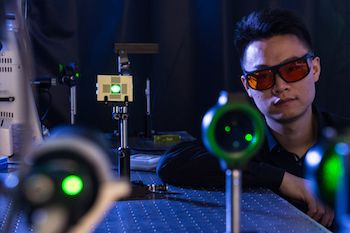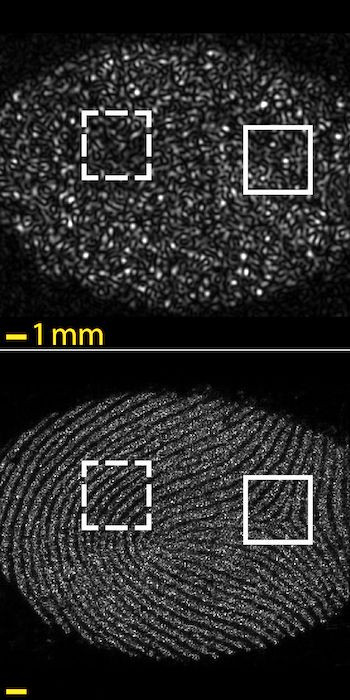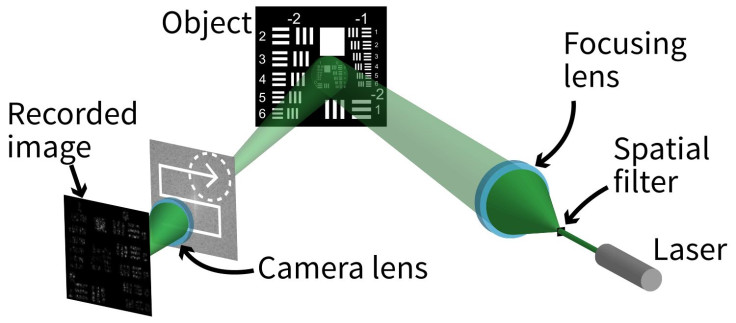New Camera Technology Uses Laser, ‘Bullet Time’ To Capture Fingerprint Details From 1 Meter Away

Professional photographers carrying bulky lenses to capture shots from a distance are a common sight, and even the amateur photographers among us have struggled to focus on the minute details of a small object, even at a close distance. But a new method of photography could both do away with the need of telephoto lenses as well as allow capturing microscopic details from a distance.
Called “Synthetic Apertures for long-range, subdiffraction-limited Visible Imaging” or SAVI for short, the system’s prototype was built and tested by researchers from Rice University in Houston, Texas, and Northwestern University in Evanston, Illinois. It extends a well-known technique already used in radio imaging to visual imaging, and the tests showed the system improved the resolution of sundry diffuse objects by as much as six times.
SAVI works by first illuminating a spot with a laser and then capturing the resulting speckle pattern — diffuse reflections caused by the coming together of different phases and amplitudes of monochromatic light such as lasers — with a camera sensor. Different camera positions are used — something like the technique to create the “bullet time” in the “Matrix” films — and the raw data is fed into a computer which constructs a high-resolution composite image.

The system was explained in an open-access paper — titled “SAVI: Synthetic apertures for long-range, subdiffraction-limited visible imaging using Fourier ptychography” — published Friday in the journal Science Advances.
Using this method allows for a long lens — needed to create a big aperture, which in turn improves the resolution of the image — to be moved out of the picture completely, to be replaced by a computer that can resolve the different speckle images into one photograph.

a statement that cheap plastic lenses and inexpensive sensors could someday replace telephoto lenses that cost thousands of dollars, without losing on quality.
“We should be able to capture that exact same performance but at orders-of-magnitude lower cost,” he said.
Currently, SAVI only works with unusual light sources like lasers, but researchers say it is the first step toward designing it to use in visible light.
Ashok Veeraraghavan, a Rice assistant professor of electrical and computer engineering, and the corresponding author of the paper, said in the statement: “Today, the technology can be applied only to coherent (laser) light. That means you cannot apply these techniques to take pictures outdoors and improve resolution for sunlit images – as yet. Our hope is that one day, maybe a decade from now, we will have that ability.”
© Copyright IBTimes 2024. All rights reserved.





















